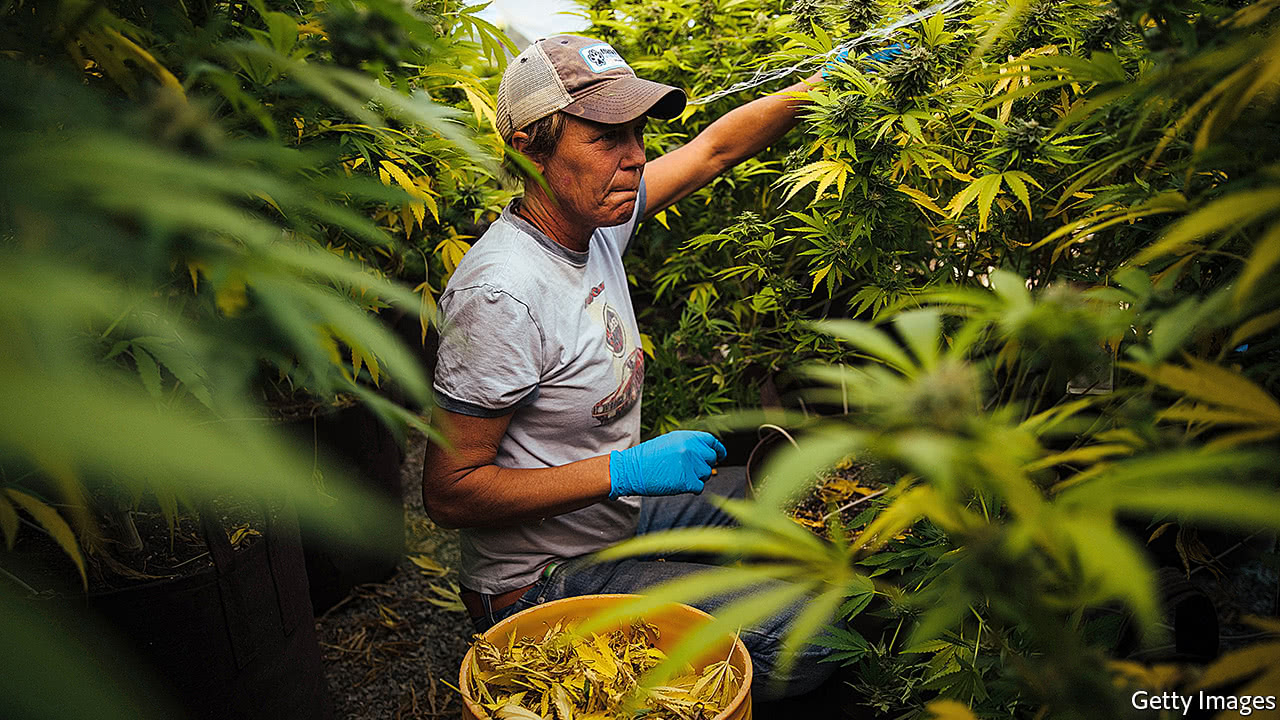MANY marijuana growers in northern California, America’s biggest source of the stuff, had expected this autumn’s harvest to be the largest ever. After all, recreational marijuana becomes legal in the state in January. Instead, wildfires in October—spreading so fast they killed 43 people—burned up half the marijuana growing in the area’s tri-county “Emerald Triangle” alone and new fires now raging will claim more. Some reckon the fires set a record not just for burnt pot, but also for the value of banknotes turned to ash.
Although 29 American states allow sales of marijuana for medical use (or medical and recreational use), federal law still classifies it as a “schedule 1” drug like heroin. Firms handling marijuana proceeds can be prosecuted for moneylaundering. Ned Fussell of CannaCraft, a maker of marijuana products, says that a few firms open a bank account under an alternative identity. But banks almost always find out. So cannabis businesses operate almost exclusively in cash. Many pot farmers fled the fires without their banknotes.
Chiah Rodriques of Mendocino Generations, a cannabis-genetics consultancy, knows two dozen people who lost a hoard. One burnt cabinet had held $250,000. Cheryl Dumont, from a Mendocino County cannabis co-operative, says that of about 20 stashes buried by members or neighbours, only one was deep enough to survive. The gold and silver she had interred melted into a dirt-infused blob.
Combustion is not the only risk. The cash is also a magnet for robbers. And Fred Timpner, head of the Michigan Association of Police, worries that untraceable cash is “ripe for public corruption”. Holders are tempted to bribe city, county and state authorities for lucrative permits.
Insurance is another problem. Growers cannot buy federal crop insurance, and most private insurers shun the market for fear of penalties. CannaCraft’s ruined crop was worth $2.5m. Some insurers now cover cannabis grown indoors, but premiums are high, says Patrick McManamon of one of them, Cannasure, of Ohio. It has been kicked out of at least five banks—“I kind of lose track,” he says.
California’s Treasury hopes to tax marijuana sales, predicted to be worth nearly $7bn next year. In November, a working group it convened to look at how to collect it securely advised state agencies to hire armoured couriers. It also recommended opening a state bank for pot money.
That is unlikely. A bid by Colorado to legalise marijuana banking is bogged down in court. Moreover, police have an incentive to keep pot money unbankable. Remarkably, forfeiture laws let police departments seize cash and pocket much of it if they suspect it includes proceeds from crime. No crime need even be charged.
In theory, cryptocurrencies such as bitcoin should be safer from cops, crooks and combustion. On February 28th trading will begin for a new digital currency called PerksCoin. By next summer roughly 5,000 pot dispensaries in America and Canada will accept PerksCoin payment by smartphone, says Daniel Cheine of CannaSOS, the Toronto firm behind it. By then, a rise or fall in PerksCoin’s initial unit value of 80 cents should hint at whether cryptocurrencies are indeed how pot-growers will stop their money going up in smoke.
credit:economist.com

